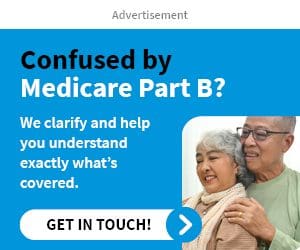Key Takeaways
-
If you’re enrolled in certain PSHB plans and eligible for Medicare, enrolling in Medicare Part B is not optional—opting out can have serious consequences, including loss of drug coverage and higher costs.
-
Exceptions exist, but only under specific circumstances. Understanding whether you’re exempt or required to enroll in Part B is critical to maintaining your PSHB coverage in 2025 and beyond.
Understanding the Requirement
In 2025, the Postal Service Health Benefits (PSHB) Program mandates Medicare Part B enrollment for many annuitants and family members who are eligible for Medicare. If you’re a Postal retiree or covered family member who is Medicare-eligible, you need to take a close look at whether you’re required to enroll in Part B to keep your health benefits intact.
This requirement stems from the Postal Service Reform Act of 2022, which laid the groundwork for a separate health benefits program specifically for Postal Service employees and retirees. As of January 1, 2025, this transition is fully in effect.
Who Must Enroll in Medicare Part B?
You must enroll in Medicare Part B if all the following apply:
-
You are a Postal Service annuitant or a family member of one.
-
You are eligible for Medicare Part A.
-
You are age 65 or older, or otherwise Medicare-eligible.
-
You are not exempt under the rules set by the U.S. Office of Personnel Management (OPM).
If you do not enroll in Medicare Part B under these conditions, you risk losing your PSHB medical coverage. Your plan may terminate your medical benefits and, critically, you may lose integrated prescription drug coverage under the Medicare Part D Employer Group Waiver Plan (EGWP).
Who Is Exempt?
OPM has provided specific exemptions from the mandatory Part B requirement:
-
You retired on or before January 1, 2025, and are not enrolled in Medicare Part B.
-
You are an employee who was age 64 or older as of January 1, 2025.
-
You live outside the United States and its territories.
-
You are eligible for health services through the Department of Veterans Affairs (VA) or Indian Health Services.
If any of these apply to you, Medicare Part B enrollment is not required to maintain your PSHB medical coverage.
What Happens If You Opt Out?
If you’re required to enroll in Part B and decide to opt out, the consequences are substantial:
-
Loss of PSHB Medical Coverage: Your plan can terminate your medical benefits, leaving you with significant out-of-pocket costs.
-
No Part D Prescription Drug Coverage: Most PSHB plans automatically enroll Medicare-eligible members in a Part D EGWP plan. Opting out of Part B typically disqualifies you from this.
-
No Late Enrollment Window: Missing your Initial Enrollment Period (IEP) for Medicare can mean waiting until the General Enrollment Period (January 1 to March 31) and facing late penalties.
-
Higher Monthly Premiums: If you enroll in Part B late, you could pay a lifetime late enrollment penalty. In 2025, the standard Part B premium is $185, and penalties increase this amount.
What About Those Already Enrolled in Medicare Part A?
Enrolling in Medicare Part A alone is not enough. While Part A is premium-free for most people, it only covers inpatient hospital stays. Part B covers medically necessary services such as:
-
Doctor visits
-
Outpatient care
-
Durable medical equipment
-
Preventive services
Without Part B, your PSHB plan may refuse to coordinate benefits, leaving you responsible for services you assumed were covered.
The Role of EGWP Prescription Drug Plans
PSHB plans integrate prescription drug benefits using a Medicare Part D Employer Group Waiver Plan (EGWP). This design improves drug coverage and reduces costs—but only if you’re also enrolled in Medicare Part B. Without Part B, you’re automatically disenrolled from the EGWP. That means:
-
You may lose drug coverage entirely
-
You may have no access to an alternative PSHB drug benefit
-
You may be subject to Medicare Part D late enrollment penalties if you seek coverage later
The $2,000 Drug Cost Cap Doesn’t Apply Without Part B
A major advantage in 2025 is the new $2,000 annual out-of-pocket cap for prescription drugs under Medicare Part D. But you only benefit from this if you remain enrolled in both Medicare Part B and the EGWP linked to your PSHB plan. If you opt out of Part B, you miss out on the cap—and potentially pay much more for your medications.
Timing Is Critical
For most people, the Initial Enrollment Period (IEP) for Medicare starts three months before your 65th birthday and ends three months after. Missing this seven-month window can result in:
-
Delayed coverage
-
Late enrollment penalties
-
Gaps in both medical and drug coverage
If you miss your IEP, you can use the General Enrollment Period (January 1 to March 31), but coverage doesn’t start until July 1. That creates a risky gap where PSHB may drop your coverage.
The Special Enrollment Period (SEP) No Longer Applies
For Postal retirees, the usual Medicare Special Enrollment Period for those covered by employer health insurance no longer applies. Since PSHB is a retiree plan and not active employment-based coverage, you can’t delay enrolling in Part B without penalty. This is a significant shift from how coverage worked under FEHB.
Medicare Coordination Isn’t Automatic
Even if you enroll in Medicare Part B, it’s vital to make sure your PSHB plan knows about it. Many benefits are coordinated between Medicare and PSHB, meaning Medicare pays first and your PSHB plan covers the rest. But for this to work:
-
You must inform your plan that you have Medicare.
-
Your providers must bill Medicare first.
-
Your PSHB plan can then pay remaining costs as secondary coverage.
Failing to update your records can result in denied claims and unnecessary bills.
How PSHB and Medicare Work Together in 2025
When both are in place, PSHB and Medicare provide powerful, coordinated coverage:
-
Medicare Part A and B pay primary on eligible services.
-
Your PSHB plan pays secondary, covering remaining eligible costs.
-
The EGWP covers your prescription medications, with the new $2,000 out-of-pocket cap.
This combination gives you enhanced coverage with less risk of financial exposure—but only if both elements are active.
Don’t Confuse FEHB and PSHB Rules
If you retired under the Federal Employees Health Benefits (FEHB) Program before the 2025 PSHB transition, your experience may have been different. Under FEHB, enrolling in Part B was optional and often weighed against cost and benefit value.
Under PSHB, however, the requirement is no longer optional for most Medicare-eligible enrollees. Mistaking PSHB rules for old FEHB policies could cause costly coverage gaps.
You Can Still Re-Enroll—But It’s Complicated
If you originally opted out of Medicare Part B but change your mind, re-enrollment is possible, but not easy:
-
You must wait for the General Enrollment Period (Jan 1 – Mar 31).
-
Coverage begins in July.
-
You may face a lifetime late penalty on monthly premiums.
-
Your PSHB coverage may not automatically resume—you’ll need to reapply and coordinate with your plan administrator.
This can be a logistical and financial challenge. If you’re currently eligible, it’s almost always better to enroll when first eligible than try to reverse a decision later.
The Bottom Line: Think Before You Opt Out
Skipping Medicare Part B may seem like a way to save on monthly premiums, but the long-term consequences can be severe. For Postal Service annuitants and eligible family members, opting out often means:
-
Termination of PSHB medical benefits
-
Loss of integrated drug coverage
-
Exposure to higher out-of-pocket medical and pharmacy costs
-
Lifelong penalties for late enrollment
Staying Covered Under PSHB Means Making the Right Medicare Moves
Making smart choices now protects your future access to healthcare. If you’re unsure whether you’re required to enroll in Medicare Part B or need help evaluating your options, reach out for personalized support. A licensed agent listed on this website can help you understand your eligibility, identify your best coverage path, and avoid costly mistakes.









